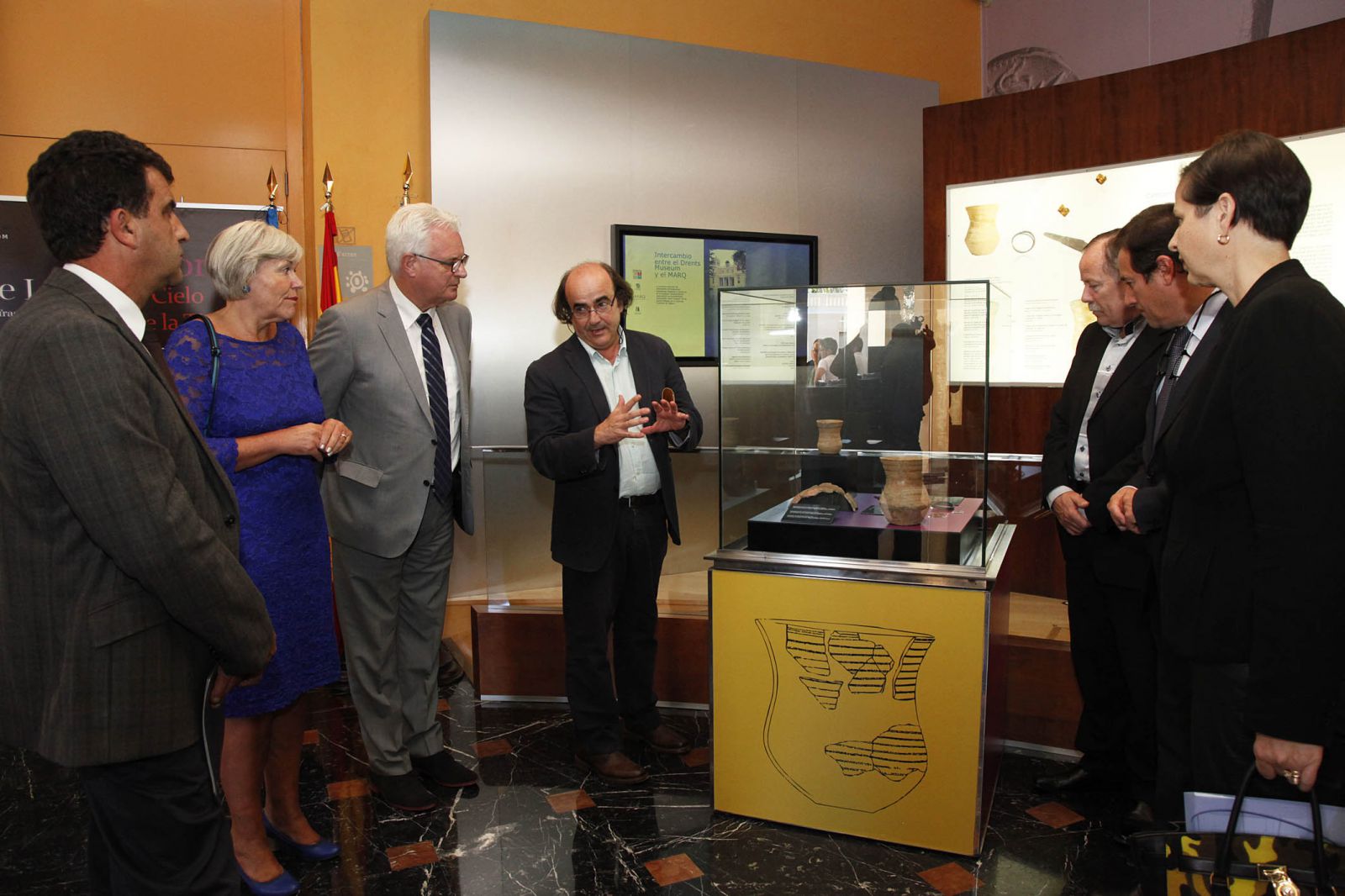
The Archaeological Museum of Alicante is hosting from today in its foyer the exhibition '.Campaniform, exchange in prehistoric times, exchange between museumsThe exhibition includes, in parallel, two campaniform ensembles from Odoorn in Drenthe (Netherlands) and Villa Filomena, in Vila-real (Castellón).
The first of these refers to a bell-shaped beaker from printed decoration in maritime style which is accompanied by a reed dagger and a copper stylusas well as two gold necklace beads and two others in amberdating back to 4,000 yearswhile the second set - the Valencian set - consists of a bell-shaped vase from mixed style (printed and corded) and fragments of another chordate style with a seniority of 4,300 years.
The Deputy for Culture, Juan Bautista RosellóThe exhibition was presented and inaugurated this morning by the deputy of the province of Drenthe, Henk van de Boerand by members of the technical staff of MARQ and the Drents Museum.
Roselló highlighted the collaboration of the Alicante museum with the Drents Museum in Assen and the Museu de Belles Arts in Castellón, where these objects come from. evoke the exchange relations that were established in prehistoric times..
The deputy explained that the MARQ and the Assen museum are part of the technical platform. European Exhibition Network of which the alicantino museum holds the secretariat and recalled that As a result of the agreements reached in this organisation, the idea of exchanging outstanding objects arose in order to make the public aware not only of pieces, but also of the links that museum institutions currently maintain within networks of mutual support..
Campaniform pottery was a prestige asset in the societies of the 3rd millennium BC. It spread throughout Western Europewhere was found in burial habitats and grave goods.often accompanied by the first metallic elements.
